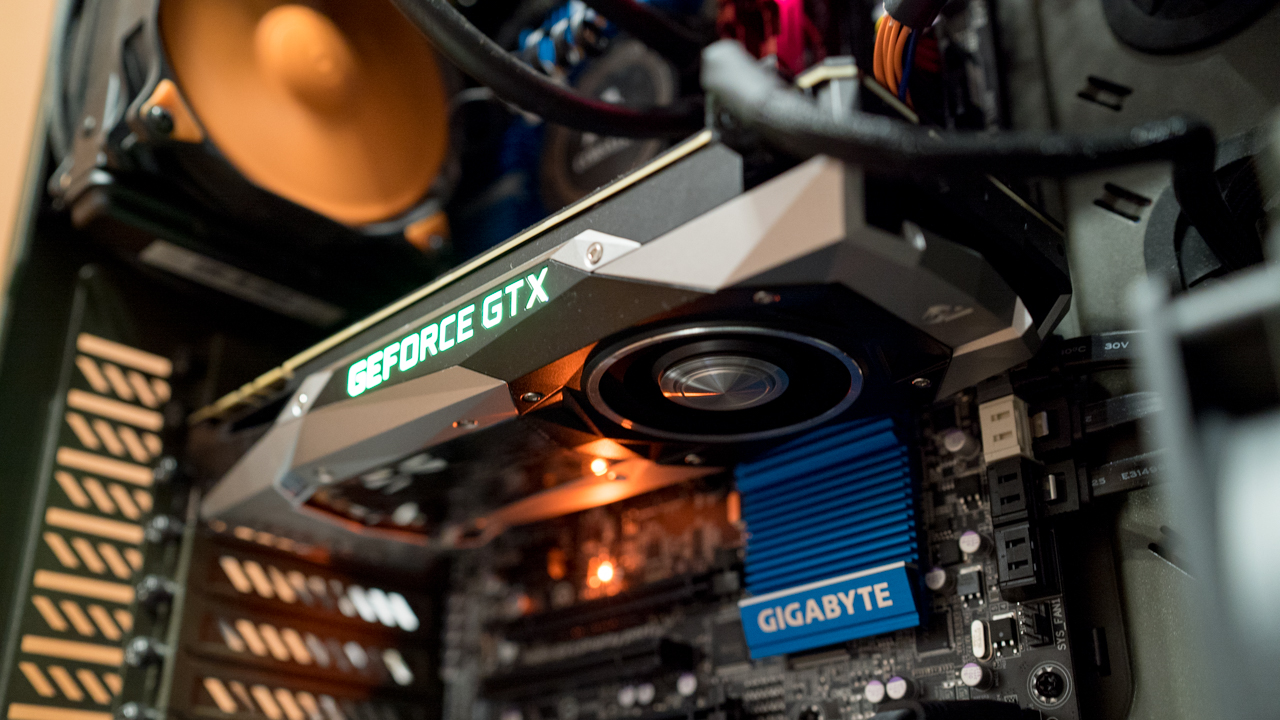Why you can trust TechRadar
Ultimately our biggest problem with Nvidia's GeForce GTX 1080 comes down to pricing. There's an $80 premium on getting your hands on the card early. AIB partner's retail prices will be far lower than that of the stock reference cooler.
In reality this doesn't make much in the way of sense. The blower style shroud, although effective, lacks the necessary capacity to deal with higher overclocks at more acceptable temperatures.
On top of that, you can bet that a vast majority of the aftermarket cards will be overclocked as standard, meaning you'll be getting better performance, with a more optimized cooler, for a lower price. Current word on the street is that we should be expecting aftermarket variants midway through June, two weeks after the 27th of May retail launch of the Founder's Edition.
We Liked
In short the performance is exceptional, there's no question that this is the most powerful single GPU out there to date. 4K gaming is joyous on this thing, and with a little tweaking to your AA settings, it'd be hard to imagine a title not capable of 60 fps on average. Couple that with what this means for the GTX 1080 Ti, and new generation of Titan that will soon be to follow, and well it's definitely going to be one hell of a year for us graphics lovers.
We Disliked
The price for the Founder's Edition. In short it's nuts, and it makes this card almost unattainable for the average joe, which is a shame. No doubt over time, we'll see this price point drop as AMD releases their Vega line of GPUs in October amongst other Polaris offerings, but until then it just pushes it slightly out of the range of an otherwise perfect product.
Final verdict
If we're just evaluating the GPU itself, the Nvidia GTX 1080 is absolutely astounding. Delivering nearly double the performance of GTX 980 in nearly every game is astonishing. Couple that with its fantastic 4K performance, this might be the first card that makes UHD gaming a reality. With its low power draw, single 8 pin power, and classy design, it's definitely one to consider if you're thinking of either upgrading to a 144 Hz 1440p gaming monitor, or a single 4K panel.
That said, if you're willing to sit it out for a few weeks to months, it won't be long before aftermarket cards come with lower price tags and better specs.

Zak is one of TechRadar's multi-faceted freelance tech journalists. He's written for an absolute plethora of tech publications over the years and has worked for Techradar on and off since 2015. Most famously, Zak led Maximum PC as its Editor-in-Chief from 2020 through to the end of 2021, having worked his way up from Staff Writer. Zak currently writes for Maximum PC, TechRadar, PCGamesN, and Trusted Reviews. He also had a stint working as Corsair's Public Relations Specialist in the UK, which has given him a particularly good insight into the inner workings of larger companies in the industry. He left in 2023, coming back to journalism once more. When he's not building PCs, reviewing hardware, or gaming, you can often find Zak working at his local coffee shop as First Barista, or out in the Wye Valley shooting American Flat Bows.
Most Popular


